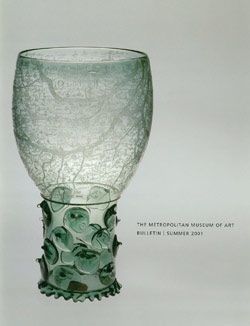Vestment II
Designer Stanislav Libensky Czech
Designer Jaroslava Brychtová Czech
Not on view
The tradition of glassmaking in the Czech Republic spans many centuries—from the medieval era through the booming Bohemian export industry of the eighteenth and nineteenth centuries to the country's current position as a leading center for cutting-edge studio glass. After World War II, artists in the former Czechoslovakia were isolated from new trends and technologies developing in the West. For the past fifty years, however, despite the long-unfavorable political climate and the scarcity of materials, Stanislav Libensky and Jaroslava Brychtová have been extremely influential in the international studio-glass movement. In the 1940s, Brychtová made pâte de verre vessels, sculptures, and plaques, and Libensky produced enameled and acid-etched tableware. By the late 1950s, the couple had begun to experiment with larger scale and abstract forms, collaborating on architectural screens and nonfigurative sculptures.
Vestment II consists of gray glass cast in a mold. Its minimalist form is reminiscent of a liturgical garment, yet the piece remains essentially an abstraction of light and color in space. The depth of the glass and its graduated color respond to the changes in the movement of light around it, so that the piece can appear opaque and grandiose but at other times almost weightless.
Due to rights restrictions, this image cannot be enlarged, viewed at full screen, or downloaded.

